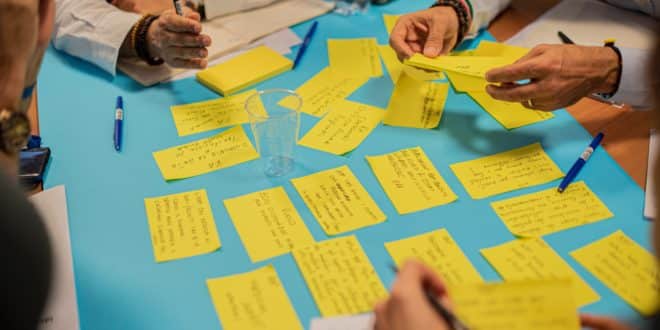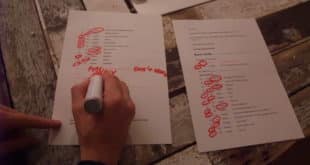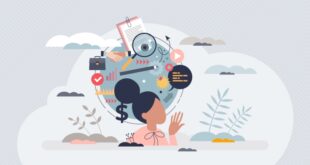By reading this article, you will get a general idea of what is meant by the theory of change and what specific vocabulary is used.
What is a theory of change?
A Theory of Change (ToC) of a project describes why change is needed and how it will happen. In simple terms, this involves identifying how you would like the current situation related to an identified problem to change, and how you think you can help that change to come about through your project. Defining a Theory of Change for your project helps you to ensure that your inputs and activities lead to tangible results that add up to the desired change.
Every project is packed with beliefs, assumptions, and hypotheses about how change happens. A Theory of Change is therefore also about articulating these many underlying assumptions about how the change will happen in a project.
Developing and using a ToC helps in planning and designing interventions, and in monitoring the project. The changes to which you expect to contribute are formulated as the outcomes and outputs in your ToC. The more specific these are formulated (including ‘who’ and ‘what’), the easier it will be to identify meaningful indicators to monitor these changes.
By making explicit how you expect you will achieve your aspired results, you will be able to steer and adapt your project where necessary and get a better insight on what works and doesn’t work. This is particularly important in complex contexts, where risks related to disaster, climate change, socioeconomic instability or conflict are high. Finally, a ToC helps in evaluation and in communication about your work and defining best practices and lessons learned.
What does a Theory of Change look like?
A Theory of Change presents an easy-to-understand vision of how the desired results will be achieved. It is usually represented in a diagram or visualization with an accompanying explanatory description (narrative).
- The diagram or visualization is your ‘pathway of change’ and provides a clear overview of the different steps of a project, from problem to end goal.
- The narrative describes the logic or theory underlying the project. This includes the problem statement, context, results, choice of activities, cause-effect relations, and the underlying assumptions.
Before going into the details of the steps involved in constructing a theory of change, it is important to know the specific vocabulary used.
| Component | Description | Example |
| Vision of success or long-term Outcomes / Impact
What do we want to achieve? |
It is the most significant expected change, the picture of the goal, the high-level change desired for a particular problem. The impact you want to achieve, the purpose of the programme. All other objectives on your map are preconditions to this vision of success. | In the long term, employment opportunities with living wages for women survivors of domestic violence. |
| Outcomes or preconditions
What change do we want? |
They are key outcomes for achieving the vision of success. All outcomes, with the exception of the long-term outcomes, are also preconditions. They are called preconditions because they are conditions that must exist as a prerequisite for the next objective in the pathway to be achieved. | Women survivors gain coping skills.
Women survivors have marketable skills in non-traditional jobs.
Women survivors have knowledge and appropriate behaviours in the workplace. |
| Assumptions/Hypotheses
What do we assume?
What factors can undermine our success? |
They represent situations outside organisational control that influence the objectives/preconditions. An assumption/hypothesis, as a precondition, is a necessary condition for the success of your programme. Unlike a precondition, it is already in place and does not need to be triggered. Assumptions/hypotheses are crucial, because if they are incorrect they can completely alter the functioning of the programme.
|
There are jobs available in non-traditional skills for women.
Women are accepted in the non-traditional skills market.
Women who have suffered abuse need more than just skills, they need to be emotionally prepared to work as well. |
| Interventions
What do we do?
What do we use? |
These are initiatives or strategies to achieve outcomes/preconditions at a higher level. The actions your programme or stakeholder group will take to achieve results. | Organise support sessions.
Conduct group support sessions.
Identify potential employers. Connect women survivors with internships. |
| Pathway of Change | Pathways are like a step map connecting various outcomes/preconditions from the current state to the vision of success. This sequence must occur in an order to achieve long-term impact. | Enrolling women survivors in a nontraditional job training and providing concealing and negotiating with local businesses to reach the long-term, livable wage employment opportunities |
| Indicators | Measurable evidence of meeting a goal. Metrics to know if the successful implementation of the outcomes/preconditions had been or not reached.
Each indicator needs to have three components: population, target and timeline. |
Outcome: women survivors have marketable skills in non-traditional jobs.
Indicator: graduation from the programme
Population: Women survivors of domestic violence
Target: 60% of women survivors of violence pass the final graduation exam.
Time: by the fifth month of the programme. |
If you are keen to know what are the steps to take in developing a Theory of Change, stay tuned!





